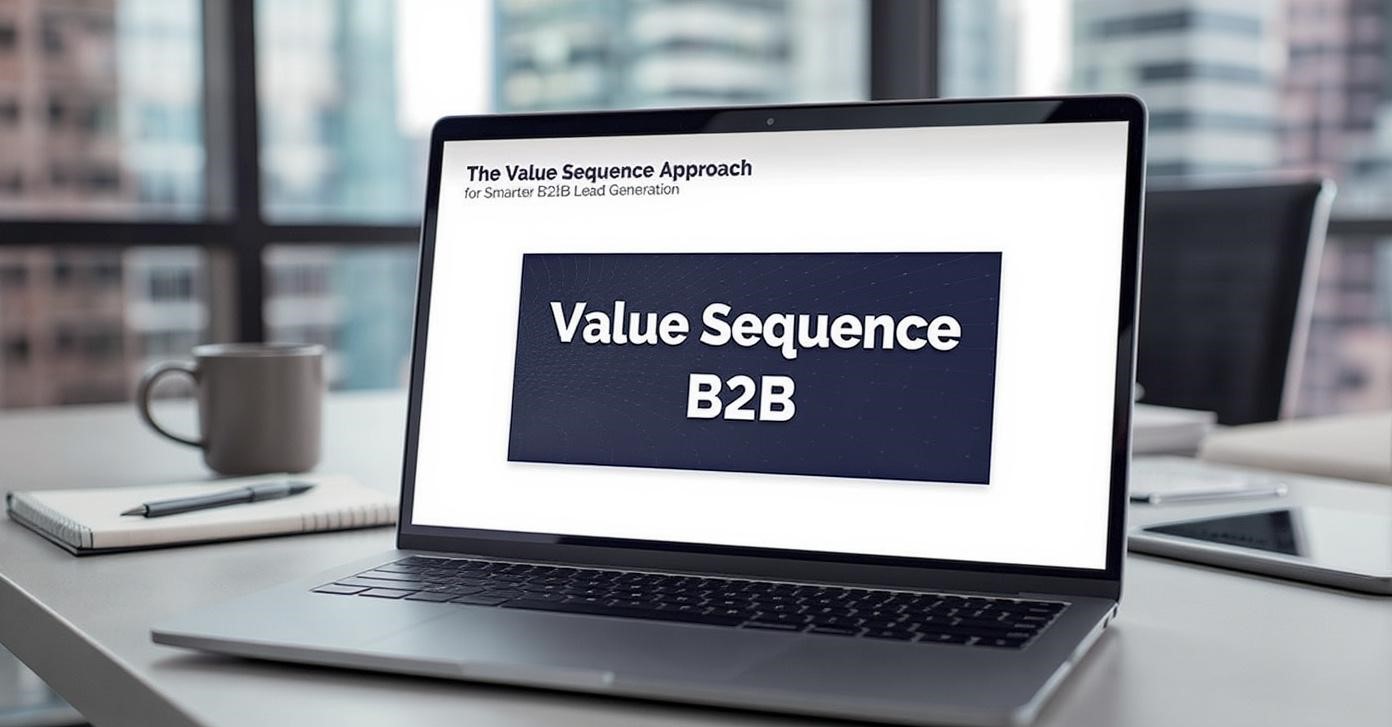B2B companies face constant pressure to generate leads that convert into meaningful business opportunities. The Value Sequence Approach provides a structured method to guide prospects through the buying journey while delivering incremental value at every stage. By focusing on relevance, personalization, and consistent engagement, businesses can nurture high-quality leads and improve conversion rates effectively.
Understanding the Value Sequence Approach
The Value Sequence Approach is a systematic framework designed to provide value at each touchpoint in the buyer journey. Unlike traditional marketing approaches that focus on volume, this method emphasizes meaningful engagement. Each step is strategically crafted to educate, build trust, and guide prospects toward a purchase decision, ensuring that interactions are relevant and beneficial.
Importance of Accurate Buyer Personas
Creating accurate buyer personas is essential for the Value Sequence Approach. Personas include details about target audience segments such as job roles, challenges, goals, and preferred communication channels. Understanding these characteristics allows marketers to tailor messaging and content for each segment. For example, a supply chain manager may prefer practical case studies, while a CFO may focus on reports analyzing ROI and cost efficiency. Detailed personas ensure that marketing efforts are targeted and impactful.
Mapping the Buyer Journey
Mapping the buyer journey is crucial for implementing the Value Sequence Approach. This process identifies key touchpoints, decision-making criteria, and potential obstacles. Understanding how prospects move from awareness to consideration and decision allows marketers to deliver content at the right time. Effective mapping accounts for multi-channel engagement, repeated interactions, and varying decision timelines, creating a smooth and efficient experience for prospects.
Delivering Incremental Value
Delivering incremental value is the core principle of the Value Sequence Approach. Instead of sending generic marketing content, businesses focus on providing actionable insights, resources, and solutions tailored to each stage of the buyer journey. For example, a lead might first engage with a blog on industry trends, download a whitepaper highlighting best practices, and then participate in a webinar or demo. Each interaction educates the buyer, builds credibility, and strengthens trust in the brand.
Content Strategy Alignment
A well-planned content strategy is essential for executing the Value Sequence Approach. Content should align with the buyer journey, offering education, actionable insights, and solutions at every stage. Blogs, eBooks, webinars, case studies, and videos should work together to provide a cohesive experience. Relevant content delivered at the right moment increases engagement, enhances credibility, and helps move leads efficiently through the sales funnel.
Marketing Automation for Scalability
Marketing automation is critical for scaling the Value Sequence Approach. Automation tools help track engagement, segment audiences, and deliver personalized content based on behavior. For example, if a lead downloads a case study, automated workflows can trigger follow-up emails with related resources or demo invitations. Automation ensures timely and consistent engagement while providing actionable data for optimizing sequences and improving lead quality.
Key Metrics to Monitor
Monitoring key performance indicators is vital to evaluate the effectiveness of the Value Sequence Approach. Metrics such as lead conversion rates, content engagement, time to conversion, and pipeline velocity provide insights into sequence performance. Tracking these metrics helps marketers identify areas for improvement, optimize content and messaging, and enhance overall ROI.
Personalization at Every Touchpoint
Personalization enhances the Value Sequence Approach by tailoring experiences to each prospect. Beyond using names in communications, personalization includes recommending relevant content, suggesting solutions, and anticipating questions based on previous interactions. Leveraging analytics and CRM data allows marketers to deliver tailored experiences that increase engagement, build trust, and improve conversion potential.
Aligning Sales and Marketing Teams
The Value Sequence Approach fosters alignment between marketing and sales teams. Marketing nurtures leads with sequenced content, while sales engages with prospects ready for high-touch interactions. Coordinated messaging and shared performance metrics create a seamless experience for leads. This alignment improves efficiency, reduces duplication, and increases overall lead conversion success.
Optimizing Multi-Channel Engagement
B2B buyers engage across multiple channels, including email, social media, websites, webinars, and events. The Value Sequence Approach emphasizes consistent messaging and value delivery across all channels. Multi-channel engagement reinforces brand authority, ensures a cohesive experience, and provides comprehensive insights into engagement patterns that inform future steps in the sequence.
Continuous Testing and Improvement
Continuous testing and refinement are essential to the success of the Value Sequence Approach. Marketers can conduct A/B testing, review engagement data, and adjust messaging and content for improved effectiveness. Iterative improvements ensure that sequences remain relevant, lead progression through the funnel becomes more efficient, and conversion rates continue to rise.
Technology and Analytics Integration
Integrating technology and analytics is key to optimizing the Value Sequence Approach. Predictive analytics can identify high-potential leads and recommend next-best actions. CRM platforms provide visibility into all interactions, enabling marketers to optimize sequences and measure performance. Technology-driven insights support data-informed decisions and improve overall lead generation outcomes.
Case Study Example
A B2B services firm implemented the Value Sequence Approach to improve lead quality and conversion rates. By mapping the buyer journey, creating detailed personas, and sequencing educational and solution-oriented content, the firm nurtured leads more effectively. Automated workflows sent personalized follow-ups based on engagement. Within six months, qualified leads increased by 39 percent, content engagement improved, and the sales cycle shortened. This example illustrates the practical benefits of applying the Value Sequence Approach.
Key Takeaways for B2B Marketers
To implement the Value Sequence Approach effectively, marketers must focus on creating accurate buyer personas, mapping the buyer journey, delivering value at each touchpoint, aligning marketing and sales, leveraging content marketing and automation, and continuously optimizing sequences. This approach allows B2B companies to generate smarter leads, nurture meaningful relationships, and drive sustainable business growth.
Read Full Article : https://acceligize.com/featured-blogs/the-value-sequence-approach-for-smarter-b2b-lead-generation/
About Us : Acceligize is a global B2B demand generation and technology marketing company helping brands connect with qualified audiences through data-driven strategies. Founded in 2016, it delivers end-to-end lead generation, content syndication, and account-based marketing solutions powered by technology, creativity, and compliance.


